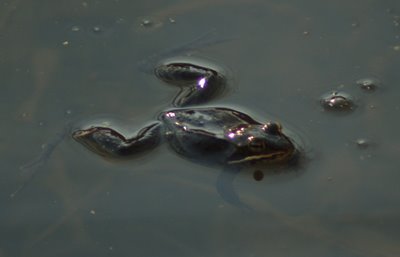Anyway,
Many of the more expensive digital cameras available today can save images in RAW format, with little or no compression and processing. This allows the photographer to do more post-processing with less image quality loss. Unfortunately, each camera manufacturer uses a slightly different file format, and Nikon at least requires that you buy special software to read the files (I recently bought a D50). Luckily, there are a few plugins for GIMP (and standalone programs) for converting and manipulating RAW files. After some experimentation, I have decided that I prefer UFRaw to the other alternatives (see my last post). UFRaw functions on most common operating systems, and supplies a standalone converter, a GIMP plugin and a batch conversion script. The GIMP plugin and GUI program have a nice import interface which allows you to adjust color curves, exposure, white balance and a few other options. Just using this screen alone, you can make drastic changes to your pictures. Once you get the image into GIMP/Photoshop, you can make even more changes, before saving as a jpeg or other lossy format, with almost no loss of quality. If your camera can produce RAW files, it is defiantly worth a try. UFRaw uses the DCRAW library, so in addition to the NEF files produced by my Nikon, most other common RAW files are also supported.
Because I have a good one on hand, below is a well cropped example produced by the UFRaw batch conversion script this afternoon of a frog (there are a lot of frogs in a pond near my home this week for some reason).

Well, back to my Biology homework ;-(
Have fun with GIMP

No comments:
Post a Comment